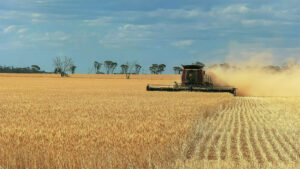The beef with growth hormones
“No added growth hormones”
You’ve seen it on meat products. But what does it mean? And why does it matter?
All beef contains hormones because all cattle contain them. To grow cattle bigger and faster, graziers might supplement animal feed with additional hormones.
Typically, these are based on oestrogens and testosterones – female growth hormones and male growth hormones. Some are natural, others are made synthetically.
These hormones can increase animal growth rate by 10-30%. Faster growth means less time to market weight, so lower feed costs. They can also produce leaner beef because they stimulate protein growth (rather than fat).
It’s easy to see why they appeal to graziers.
These hormonal growth promotants (HGPs) are deemed safe by Australia’s regulators, who feel that there is no appreciable health risk to humans eating HGP-treated beef.
In fact, virtually all global health regulators have come to the same conclusion. Only the European Union bans HGPs.
So, why has the EU banned them? Why has the issue become important enough for some meat producers to proudly display a NO ADDED HORMONE claim on their meat and dairy food labels?
The EU’s ban stems from the concern that HGPs can increase the level of insulin-like growth factor, which has been linked to an increased cancer risk.
Other factors cited by anti-HGP campaigners:
Some studies have linked HGPs to the early onset of puberty in children.
The addition of HGPs can cause mastitis in cows. To treat this, animals are given antibiotics. This in turn can lead to antibiotic resistance in humans.
So, who’s right? What should we consumers do?
It’s simple.
If the health risks of growth hormones concern you, look for meat and milk labelled NO ADDED GROWTH HORMONES and NO ANTIBIOTICS.
If you’re happy that the risks are minimal (as most regulators believe), eat and sip without worry.
You can support Australia’s graziers and farmers by joining the IIF Co-operative. You can read about the benefits here.




